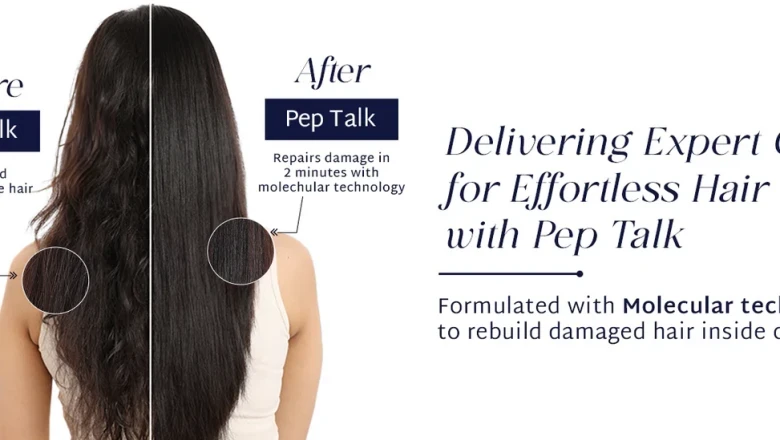views
Frizzy hair can be frustrating, but it doesn’t have to be a lifelong battle. Whether your frizz is caused by humidity, dryness, or damaged strands, understanding the root cause and implementing the right care routine can transform your hair into smooth, shiny locks. In this comprehensive guide, we’ll explore the science behind frizz, actionable tips to tame it, and the best frizz control hair products to achieve a sleek, polished look.
Understanding Frizz: What Causes It?
Frizz occurs when the cuticle, the outermost layer of your hair, lifts, allowing moisture to enter and swell the hair shaft. This can result in unmanageable, puffed-up strands. Here are some common culprits:
1. Humidity
Humidity exposes weaknesses in the hair cuticle, allowing moisture to seep in and cause swelling. To combat this, focus on products that create a barrier against environmental moisture, such as anti-humidity sprays or serums infused with silicone and oils like argan or coconut. These seal the cuticle and keep humidity at bay.
2. Dryness
Dry hair lacks the moisture it needs to stay smooth and pliable. When hair is too dry, it seeks moisture from the surrounding air, which can lead to frizz. Addressing dryness begins with hydrating products like deep conditioners and leave-in treatments formulated with nourishing ingredients such as glycerin, shea butter, and aloe vera.
3. Overwashing and Heat Damage
Washing hair too frequently strips it of its natural oils, leaving it dry and prone to frizz. Similarly, heat styling tools like flat irons and blow dryers can weaken the cuticle and exacerbate frizz. Use heat tools sparingly and always apply a heat protectant spray to minimize damage.
4. Hair Texture
Hair with natural curls or waves is more susceptible to frizz because of its uneven cuticle structure. Learning to work with your natural texture and choosing the right styling products can make a world of difference.
The Importance of a Tailored Hair Care Routine
An effective hair care routine is the cornerstone of frizz management. Here’s a step-by-step guide:
1. Start with a Gentle, Sulfate-Free Shampoo
Sulfates can strip the hair of its natural oils, making it more prone to frizz. Opt for sulfate-free shampoos that cleanse without over-drying. Look for ingredients like coconut milk, argan oil, or keratin to nourish while cleaning.
2. Use a Deep Conditioning Mask
Incorporate a weekly deep conditioning treatment to replenish lost moisture. Masks with ingredients like avocado oil, keratin, or hyaluronic acid are especially effective in restoring hydration and strengthening strands.
3. Apply Leave-In Conditioner
A lightweight leave-in conditioner adds an extra layer of moisture and protection. Choose products specifically designed to control frizz and detangle, reducing breakage during styling.
Tips for Styling Frizz-Prone Hair
1. Use the Right Tools
Invest in ionic hair dryers that reduce static and frizz. Use a wide-tooth comb instead of a brush to minimize breakage and ensure even product distribution.
2. Embrace Air Drying
Minimize the use of heat styling tools by air drying your hair whenever possible. If you must blow-dry, use the cool setting and point the nozzle downward to smooth the cuticle.
3. Finish with Anti-Frizz Serums
Apply a small amount of anti-frizz serum or oil to the ends of your hair for a polished look. Look for products containing silicones, which help seal the cuticle and add shine.
Ingredients to Look for in Anti-Frizz Products
1. Keratin
Keratin strengthens and smooths the hair shaft, making it less susceptible to frizz. It’s commonly found in serums, masks, and shampoos.
2. Argan Oil
Rich in fatty acids, argan oil hydrates and tames frizz while adding shine. It’s a must-have ingredient in leave-in conditioners and serums.
3. Silicone
While controversial, silicone in small amounts can provide a protective barrier against humidity and add a silky finish.
4. Glycerin
This humectant attracts moisture into the hair shaft, ensuring hydration from within.
Lifestyle Adjustments for Frizz Control
1. Protect Hair While Sleeping
Switch to a silk or satin pillowcase to reduce friction and prevent frizz overnight. Alternatively, wrap your hair in a silk scarf before bed.
2. Hydrate from Within
Drink plenty of water and maintain a balanced diet rich in omega-3 fatty acids, vitamins, and minerals to nourish your hair from the inside out.
3. Avoid Harsh Treatments
Limit chemical processes like bleaching and perming, as these can weaken the cuticle and exacerbate frizz.
Shop Frizz-Fighting Products at Bounce Beauty
Bounce Beauty offers a curated selection of premium anti-frizz products designed to tame unruly hair. From nourishing shampoos to smoothing serums, our range is tailored to help you achieve silky, smooth locks. Explore trusted brands like Davines, Raise Beauty, and more to find your perfect match.
FAQs
1. What causes frizz in hair?
Frizz is caused by a lack of moisture, exposure to humidity, or damage to the hair cuticle.
2. How can I prevent frizz naturally?
Use hydrating products, avoid over-washing, and protect your hair with a silk pillowcase. Embrace natural oils like argan or coconut for added moisture.
3. Is frizz worse with curly hair?
Yes, curly hair is more prone to frizz because its cuticle structure is naturally uneven, making it harder to retain moisture.
4. Can regular trims reduce frizz?
Absolutely! Regular trims prevent split ends, which can travel up the hair shaft and contribute to frizz.
5. Which product is best for frizz control?
Look for products with keratin, argan oil, and glycerin. Silicone-based serums are also effective for taming flyaways.






















Comments
0 comment